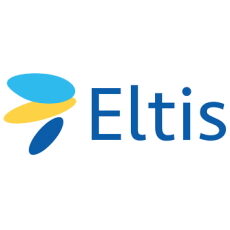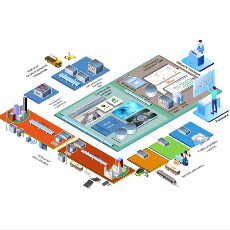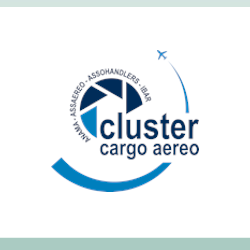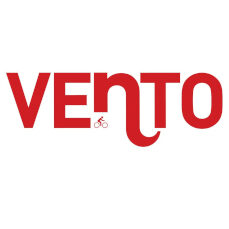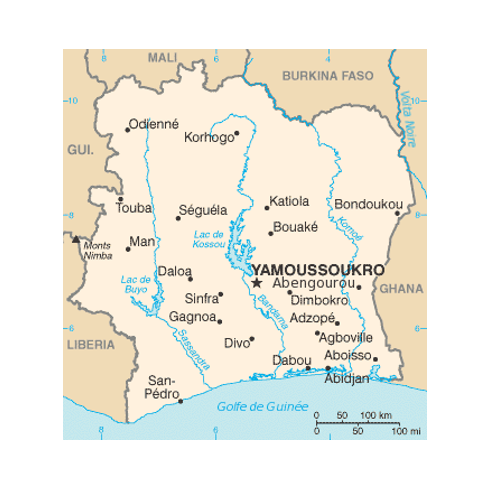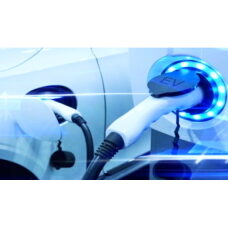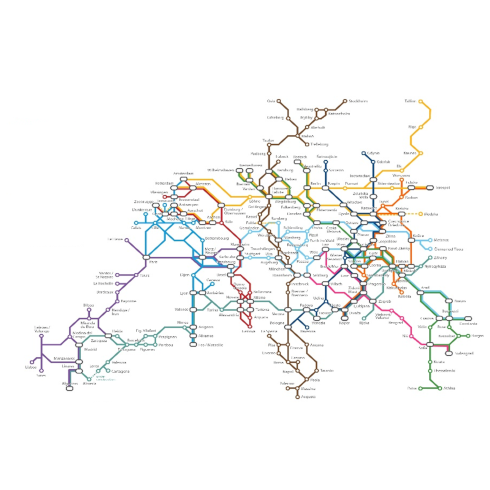- All
- African projects
- assessment
- assessment selected projects
- Assessment selected projects 2
- Assessment selected projects 3
- Assessment selected projects 4
- ASTRA
- Cost Benefit Analysis
- Electric mobility and ITS
- MOMOS
- planning
- planning selected projects
- planning selected projects 2
- planning selected projects 3
- planning selected projects 4
- planning selected projects 5
- projects
- Railways projects
- research
- research selected projects
- research selected projects 2
- research selected projects 3
- studies
- studies selected projects 1
- studies selected projects 2
- studies selected projects 3
- studies selected projects 4
- studies selected projects 5
- TRTingegneria
- TRUST
- urban mobility
- Pre-feasibility study for the establishment of a Vertiport in the Municipality of Piacenza The pre-feasibility study for the establishment of a vertiport in Piacenza is pioneering in the context of Urban Air Mobility themes and has been structured around three main lines of activity: market analysis, demand analysis (potential), and location hypotheses. The market analysis and its prospects involved an in-depth examination of electric vertical takeoff and landing (eVTOL) aircraft, their temporal outlook, and the technological barriers associated with such technologies. An overview of the global and national market was provided, and insights were developed regarding the ground infrastructure enabling these new services – Vertiports – as well as potential services, taking into account industry regulations. Furthermore, a detailed analysis was conducted on both global and Italian cases of experimental vertiport implementations, examining the regulatory framework in the sector. The analysis of potential demand was conducted using big data, derived from mobile network cells, and focused on exchange flows with possible attractor centres within a radius of approximately 150 km from Piacenza. These attractor centres included the city of Milan and the airports of Milan (Maplensa and Linate), Bergamo, Bologna and Turin. The potential locations for the vertiport within the territory of the Municipality of Piacenza were examined, taking into account the necessary infrastructure elements and European guidelines provided by EASA (European Union Aviation Safety Agency). The selection criteria favoured pre-existing, accessible areas. Finally, the estimate of the minimum required square footage and associated costs have been prepared.
- Contribution to the EU Urban Mobility Observatory, ex-ELTIS, facilitating the exchange of information, knowledge and experience in the field of sustainable urban mobility The EU Urban Mobility Observatory, previously known as ELTIS, was created more than 25 years ago, and it is now Europe’s main source of information on urban mobility. The Observatory, financed by the European Commission’s Directorate General for Mobility and Transport, facilitates the exchange of information, knowledge and experience in the field of sustainable urban mobility. It addresses individuals working in transport as well as in related disciplines, including urban and regional development, health, energy and environmental sciences. TRT collaborates with the EU Urban Mobility Observatory since 2017. The current contract, covering years 2024 and 2025, foresees for TRT to carry on the following activities: collection of regular updates and lessons learned from existing EU- funded urban mobility projects covering several EU funding programmes and initiatives with the objective to pinpoint valuable contributions and enhanced insights to enrich the EU Urban Mobility Observatory. Special emphasis is placed on key topics of interest within the thematic domains of all six EGUM sub-groups. Update and further develop the portal, developing new contents such as news in the field of urban mobility and case studies across Europe Provide administrative support to the EGUM sub-groups, particularly on “Urban Vehicle Access Regulations (UVARs)” and “Active Mobility and safety of vulnerable road users” Support on the follow-up on the Commission Recommendation on national SUMP support programmes Support on updating the SUMP Guidelines and quality review of SUMP reference materials For more information: Previous contact ELTIS + SUMI – 2022 – 2023 Previous contract ELTIS – 2017 – 2021
- Mapping study on digital and technical solutions to enable more effective and user-friendly UVARs, while respecting the principle of subsidiarity The broad objective of the study is to support the operation of more efficient, user-friendly and non-discriminatory UVARs across the European Union for both vehicle users, operators and city authorities. For vehicle users (private and commercial) the specific objective is to improve the ease and efficiency of UVAR pre-registration procedures while, for authorities, to ease the conformity checks of vehicles. This study will seek to achieve the abovementioned objectives by identifying and mapping EU interoperable technical and digital solutions (or combinations thereof), as well as respective realistic and feasible implementation options, that facilitate seamless travel across the EU. This further “mapping study” builds on UVAR Exchange results and is structured in 4 Tasks. Task 1 starts with the identification, mapping, analysis and further clarification of interoperable digital and technical solutions or their combinations thereof, including an analysis of what it takes to implement them on the ground. Task 2 will provide an overview of the identified technology combinations with its specific pros and cons, constraints and challenges, including the notions of user-friendliness and non-discriminatory aspects. It will investigate and suggest EU-wide interoperability standards needed for UVAR compliance and enforcement technologies and digital solutions Task 3 will build from the previous and draft a roadmap of actions. Task 4 is a transversal task that will concentrate all stakeholder engagement and consultation activities TRT leads Task 3 activities and is responsible for investigating digital tachograph and camera-based solutions including data exchange and enforcement practices and IT systems in use in Italy. Besides TRT, the awarded consortium is composed of Panteia (NL), MAPtm (NL) and Austriatech (AT). The study follows the previous European Parliament Preparatory Action, contracted by DG MOVE, for an “User-friendly information tool on urban and regional vehicle access regulation schemes” that generated the projects UVAR Box and UVAR Exchange (https://uvarbox.eu/) with TRT as partner of the two consortia.
- Modelling European cities’ pathways to zero-emission urban mobility by 2030 through the development of potential transition scenarios This study modelled European cities’ pathways to zero-emission urban mobility by 2030 through the development of potential transition scenarios. Each scenario is built on different set of sustainable policy measures, whose impacts is quantified through a series of indicators as output results. The assessment is realized through MOMOS a quantitative tool which allows to simulate and quantify in a simplified way the impacts of potential mobility transition scenarios in cities. Four potential scenarios, each one with a different focus and a specific combination of policy measures, have been simulated and applied to five real European cities: Brussels, Madrid, Milan, Greater Manchester, and Warsaw. An in-depth data collection defined and reproduced the city characteristics at the base year, including socio-demographic aspects as well as mobility features. The main output of the study consisted in the calculation of the CO2 emissions reduction associated to each scenario. Besides that, a series of core indicators have also been calculated for the 2030 horizon. These included: modal split, public and private fleet electrification, car ownership, road safety, and air pollutants emissions. In addition, multi-criteria cost effectiveness analysis estimated costs and benefits associated to the four transition scenarios. Such analysis was based on four components: (implementation and maintenance) costs of the policy measures, environmental benefits, users’ transport costs and travel time, and revenues for the public administration and service providers. For more information: Clean cities website on the (E)Mission zero study, including technical reports and factsheet results. Briefing of the (E)Mission zero study Interactive tool to explore results of the (E)Mission zero study
- Air cargo in Italy – Survey to companies The Cluster Cargo Aereo represents the main stakeholder of the market of the air cargo in Italy (shippers, carriers, handlers), with 400 companies that occupy approximately 40.000 direct dependent. The function of the Cluster is to provide research, studies and statistics and to offer insights for the operators of the sector through the project «Osservatorio Cargo Aereo» born in 2018. After the first study, presented in 2019 and focused on transport supply (competitiveness of national and European airports), and the second study on air freight transport demand of 2020, the Cluster has commissioned to TRT a new study in order to better understand the perception of the air cargo service in Italy. Therefore, TRT has realized a survey to the main manufacturing companies, integrated by an in-depth survey to the shipment companies, whose results have been introduced during the 5th Convention of the Air Cargo Observatory, where there was an audience of 200 stakeholders and companies of the sector. The results made it possible to identify the determining factors for the modal choice, the degree of satisfaction of the Italian airport system, the main criticalities, the potentialities of development of the air cargo in Italy regarding to some trends of market and the strategies that can be put in field in order to favor the development of the belonging row.
- Drafting of the executive design including the elements of the definitive project necessary for the Services Conference of two parts of the VENTO cycle route between Piacenza, Fossadello and Cremona TRTIngegneria was commissioned by AIPO to draw up the executive design of two sections of the VENTO cycle path: the Piacenza-Fossadello priority lot and the Fossadello-Cremona lot E1. The second mentioned lot is financed by funds linked to the National Recovery and Resilience Plan. Starting from the Technical-Economic Feasibility Project developed at an interregional level, TRTingegneria develops the executive project of the lots indicated above, in particular the in-depth study of the detailed aspects, by means of a chorography of the framework, the plan of the project insertion both on aerial photos and on CTR, the list and analysis of prices with the incidence of labour, the metric computation, the economic framework, the report on the excavated soil and rocks and the descriptive-performance specifications of the work. As for the specialised reports, TRTingegneria develops the geological and geotechnical report in addition to the hydrological and hydraulic report, the environmental report, the preventive check of archaeological interest, the technical report of the electrical systems, the interference resolution and their planimetry. On the urban planning side, landscape and historical/cultural constraints are analysed, as well as interferences with the Natura 2000 Network and the drainage and irrigation system. Similarly, the technical maps of the municipal regulatory plans (or similar instruments) will be analysed to verify the project’s inclusion. Finally, TRTingeneria develops the road design of the cycle track, with detailed plans on planimetric survey, with details of intersections, longitudinal profile, current and typological sections. Road construction details, signage, parking areas, water collection system and electrical installations are also included.
- Ivory Coast – Elaboration of the National Logistics Plan The aim of the project is the elaboration of the National Logistics Plan of the Ivory Coast with the identification of strategies for the development of logistics in the country, the drafting of an action plan and the training on the simulation model realised. The work is characterised by the performance of the following activities: collection of data and information through field interviews and desk research with reference to freight transport and logistics in Ivory Coast; processing of the data and information collected in order to provide an overview of the current state of logistics in the country, both in terms of supply and demand for freight transport; analysis of the institutional, organisational and regulatory framework of the freight transport sector in the Ivory Coast; study of the country’s freight transport and logistics development programmes for the future years; elaboration of the National Logistics Plan of the Ivory Coast. In support of the plan, TRT is also responsible for the construction of a simulation model of the demand and supply of freight transport in the country, capable of providing a forecast of demand, also in relation to the constant growth of the national GDP and the planned infrastructural interventions both on the transport network and on the main nodes (such as, for example, distribution centres and port terminals).
- Design and assessment of the National E-Mobility Strategy in Jordan Electrification is one of the main options towards decarbonizing the transport sector. The Jordanian transport sector, currently reliant on fossil fuels, accounts for nearly 40% of the energy consumption in the country in 2020. Transport decarbonisation has to be addressed to achieve Jordan’s ambitious Nationally Determined Contribution (NDC) goals. From electricity-sector perspective, uncontrolled electric vehicle (EV) uptake may bring challenges such as increase in peak load and distribution grid congestion, but also present financial and technical opportunities due to new revenue streams. Seeing the potential and benefits of E-Mobility uptake, the Government of Jordan has included Designing a National E-Mobility Strategy as part of its Reform Matrix, under Pillar 9 Energy. To this end, the Ministry of Energy and Mineral Resources (MEMR) has been leading the effort in coordination with key stakeholders and implementing partners. The World Bank (WB), through the Jordan Growth Multi-Donor Trust Fund (MDTF), supports MEMR and GoJ in its mandate with required Technical Assistance (TA) activities. This project will inform the WB’s policy dialogues in Jordan related to scaling up E-Mobility, in the context of the GoJ’s effort to design, launch, and implement a National E-Mobility Strategy. This study will have a particular focus on energy-sector issues (notably charging infrastructure and charging tariff), but also build upon past efforts, consolidate previous findings, systematically assess the key issues at stake, and provide valid and actionable options in order to support GoJ’s formulation of a comprehensive National E-Mobility Strategy. TRT, supported by MRC (Spain), is leading the project and is responsible for the design and assessment of the strategy. As part of its activities TRT has developed the Jordan vehicle fleet model to forecast the uptake of electric mobility.
- Scoping and Feasibility Study for a European Transport Market Study Client: RailNetEurope (RNE) RailNetEurope (in short, RNE), commissioned the consortium formed by TRT (lead) and HaCon a scoping and feasibility study for the development of a freight transport market study at the European level (European Transport Market Study, or ETMS). The need to investigate the technical characteristics, and the potential use cases of such a study stems from the scarce diffusion and lack of application of the Transport Market Studies made by individual European Rail Freight Corridors (RFCs) in the past. A European-level study would overcome the drawbacks identified with previous studies and would concretely support the necessity of optimising and coordinating efforts aimed at increasing the modal share of rail freight transport, in line with EU policy targets. The research process underlying the feasibility study was first grounded on a thorough analysis of existing RFCs’ Transport Market Studies, aimed at identifying the respective contents and structure, as well as the data sources and databases employed; further, the employment of EU-scale models was assessed with respect to the purposes of simulation and forecasting, and a wide stakeholder consultation strategy was activated, bringing i.a. infrastructure managers, railway undertakings, associations, port terminals, and members of the Rail Freight Corridors to the table. The project delivered a feasibility study with an accurate assessment of the actual possibility of making a Transport Market Study at the European scale, based on both the availability of necessary data and analytical tools, as well as the need to adequately and efficiently respond to the requests brought up by stakeholders. Specifically, several options for realising the study have been evaluated, accompanied by the definition of required analytical tools and methodologies. Based on the best solution, the main components of the actual study have been set, and guidelines for its realization have been redacted. For more information: RailNetEurope istitutional websire Dedicated page for Rail Freight Corridors


